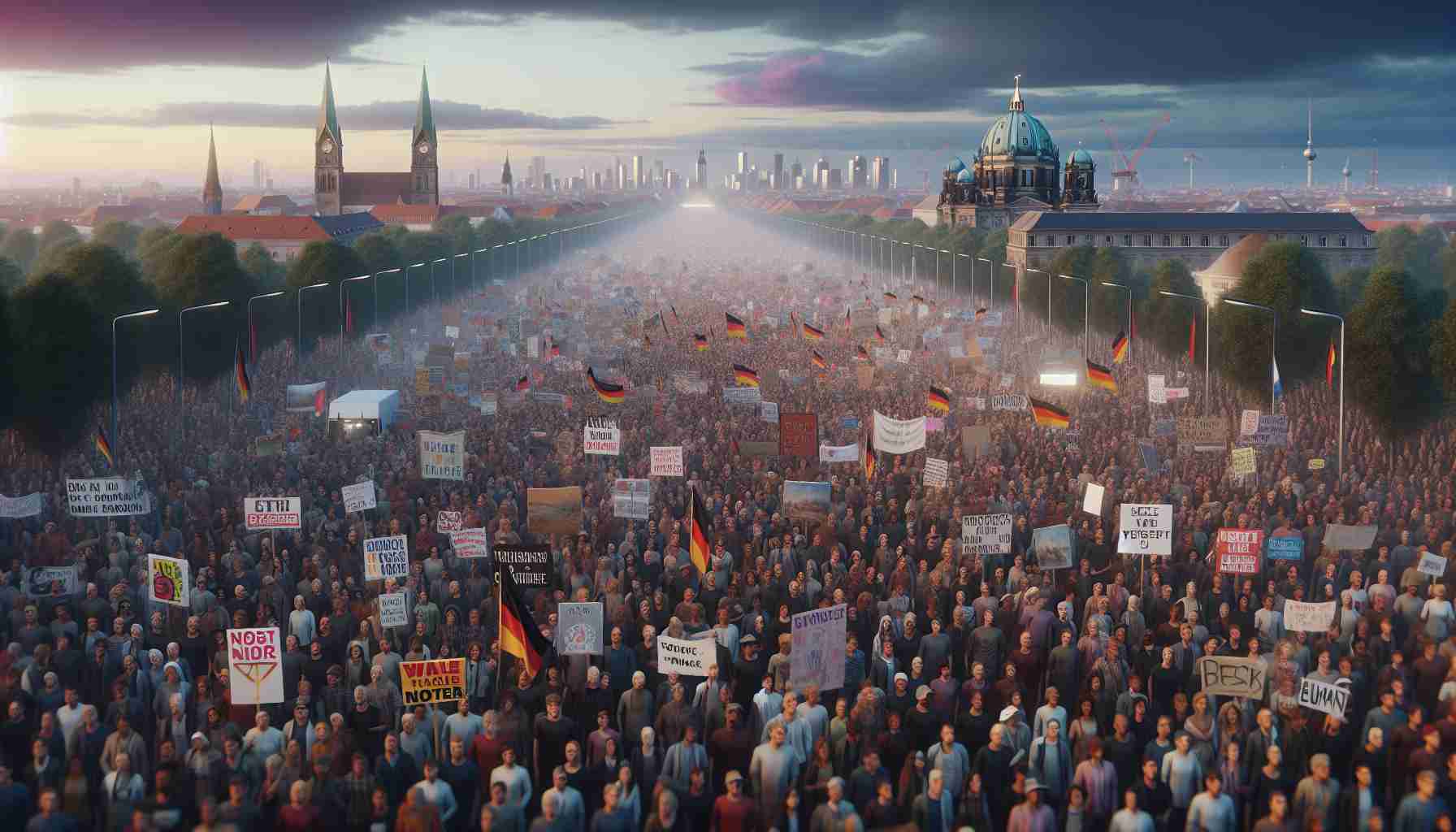- 25,000 people gathered in Frankfurt’s Römerberg to stand against right-wing extremism, promoting love and democracy.
- The event in Frankfurt was part of a national movement, with similar demonstrations occurring in over 40 cities across Germany.
- Participants navigated police barricades and public transport closures to demand change, transforming the city into a hub of activism.
- The protest was significantly driven by the LGBTQ+ community’s Christopher Street Day movement, highlighting the vulnerability of marginalized groups.
- The collective action aimed to counteract the growing political vitriol, reaffirming a nationwide commitment to democratic ideals.
- The demonstrations illustrated a powerful message of unity and hope, advocating for a nation free from hatred and division.
Beneath the imposing spires of Frankfurt’s Römerberg, a wave of people—25,000 strong and counting—gathered, their voices raised against a swelling tide of right-wing extremism. This Saturday marked a pivotal moment in a nationwide movement as thousands unified under the banner of love and democracy, renouncing hatred and discrimination.
Frankfurt, a city known for its rich history and vibrant culture, found its streets buzzing, not with weekend shoppers or tourists, but with citizens demanding change. From Paulusplatz to Mainkai, once-bustling transit hubs became arenas of activism, as participants navigated police barricades and public transport closures. The air, charged with the hum of impassioned speeches and waves of applause, carried a clear message: silence is no longer an option.
While Frankfurt was a focal point, this was not just a local outcry. More than 40 cities across Germany choreographed their own symphonies of dissent. The imagery was unified—a poignant reflection of the nation’s heart, glowing with hope amidst a backdrop of brewing political storm clouds.
The call to action emerged from the LGBTQ+ community’s Christopher Street Day movement, a poignant reminder of those most vulnerable to societal shifts. Their message rang clear, urging a collective stand against the mounting vitriol that threatens to poison the country’s political landscape.
By dusk, as the crowds began to disperse, their voices left imprints on the cobblestones—a testament to a renewed resolve to protect the democratic ideals they hold dear. In standing against extremism, these marchers illuminated a path forward, one where love and unity dispel fear and division.
How a Nationwide Movement in Germany is Challenging the Rise of Right-Wing Extremism
How-To Steps & Life Hacks: Organizing Grassroots Movements
The recent protest in Frankfurt is a prime example of effective grassroots activism. If you’re considering organizing a similar movement, here are steps to consider:
1. Define Your Cause: Clearly articulate the issues that need addressing, just as the protesters unified against right-wing extremism.
2. Build a Coalition: Collaborating with established groups, such as LGBTQ+ organizations during the Frankfurt demonstration, can amplify your message.
3. Utilize Social Media: Platforms like Twitter and Facebook can help spread the word quickly and efficiently.
4. Engage Partners: Work with local businesses or artists to support or sponsor the event, making it more community-focused.
5. Coordinate Logistics: Manage details like transportation, permits, and safety measures, ensuring seamless operations under police guidance.
Real-World Use Cases: The Impact of Unified Voices
– Political Change: Such protests can pressure policymakers to enact legislation that curbs extremism.
– Public Awareness: They shed light on societal issues, promoting widespread discussions and understanding.
Market Forecasts & Industry Trends: The Future of Activism
– An increase in digital platforms is expected to facilitate more global and interconnected protests.
– There’s a forecasted rise in youth-driven movements, emphasizing climate change and social justice.
Reviews & Comparisons: Protests vs. Policy Changes
– Protests are immediate and attention-grabbing but sometimes lack staying power.
– Policy Changes take longer but lead to long-term solutions if properly enacted.
Controversies & Limitations: Balancing Freedom and Order
– Some critique such movements for potentially disrupting public life, questioning the balance between free expression and civic disturbance.
– Not all protests result in policy changes, leading to possible disenchantment.
Features, Specs & Pricing: Assessing the Cost of Activism
– Financial investments include permits, accommodations, and legal guidance, though many community-organized events rely on volunteer work.
Security & Sustainability: Ensuring Lasting Impact
– Security requires cooperation with local law enforcement to ensure peaceful demonstrations.
– Sustainability involves maintaining public interest through continuous engagement and follow-up activities.
Insights & Predictions: The Path Forward
– As political polarization increases globally, expect more frequent and diverse movements addressing various societal issues.
– Integration of virtual reality in protests could emerge, offering unique participation avenues.
Tutorials & Compatibility: Organizing a Successful Rally
– Planning is critical: develop a comprehensive agenda and rehearse key speeches to maintain momentum and focus.
Pros & Cons Overview
Pros:
– Immediate public attention.
– Encourages unity and solidarity.
– Can quickly mobilize support for a cause.
Cons:
– Temporary disruptions to local businesses and daily life.
– Risk of political backlash or misinterpretation.
– Requires significant preparation and resources.
Actionable Recommendations
– Get Involved: Support local causes or travel to larger events to show solidarity.
– Educate Others: Share factual information about the issues and promote civil discourse.
– Follow Up: After attending or organizing a protest, keep the conversation alive through social platforms or community meetings.
For more on social movements and activism, visit the BBC or the Deutsche Welle.
In summary, while protests like those in Frankfurt represent a powerful display of unity against threats to democratic ideals, they must be complemented by sustained efforts and strategic policy advocacy to effect lasting change.
